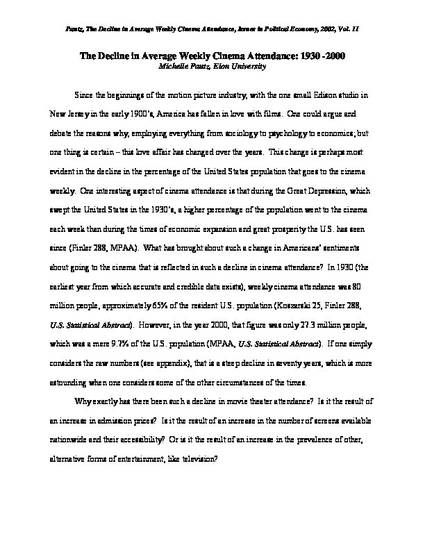
Since the beginnings of the motion picture industry, with the one small Edison studio in New Jersey in the early 1900s, America has fallen in love with films. One could argue and debate the reasons, employing everything from sociology to psychology to economics; but one thing is certain: This love affair has changed over the years. This change is perhaps most evident in the decline in the percentage of the United States population that goes to the cinema weekly. One interesting aspect of cinema attendance is that during the Great Depression, which swept the United States in the 1930s, a higher percentage of the population went to the cinema each week than during the times of economic expansion and great prosperity since. What has brought about such a change in Americans' sentiments about going to the cinema that is reflected in such a decline in cinema attendance?
Available at: http://works.bepress.com/michelle_pautz/11/

Published when author was a student at Elon University; research was explicitly cited in The New York Times: “In downturn, Americans flock to the movies.” Michael Cieply and Brooks Barnes, 1 March 2009, A1.